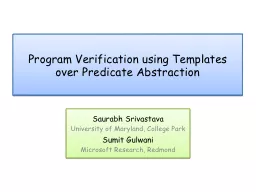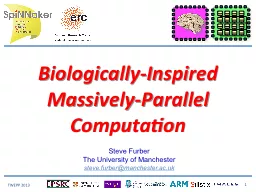PPT-Combining Pre-Silicon Verification Brains with Post-Silicon
Author : yoshiko-marsland | Published Date : 2017-04-19
Reviewer ShuoRen Lin 2012511 ALCom 1 Abstract Postsilicon functional validation challenges Light overhead associated with the testing procedures Highquality validation
Presentation Embed Code
Download Presentation
Download Presentation The PPT/PDF document "Combining Pre-Silicon Verification Brain..." is the property of its rightful owner. Permission is granted to download and print the materials on this website for personal, non-commercial use only, and to display it on your personal computer provided you do not modify the materials and that you retain all copyright notices contained in the materials. By downloading content from our website, you accept the terms of this agreement.
Combining Pre-Silicon Verification Brains with Post-Silicon: Transcript
Download Rules Of Document
"Combining Pre-Silicon Verification Brains with Post-Silicon"The content belongs to its owner. You may download and print it for personal use, without modification, and keep all copyright notices. By downloading, you agree to these terms.
Related Documents











